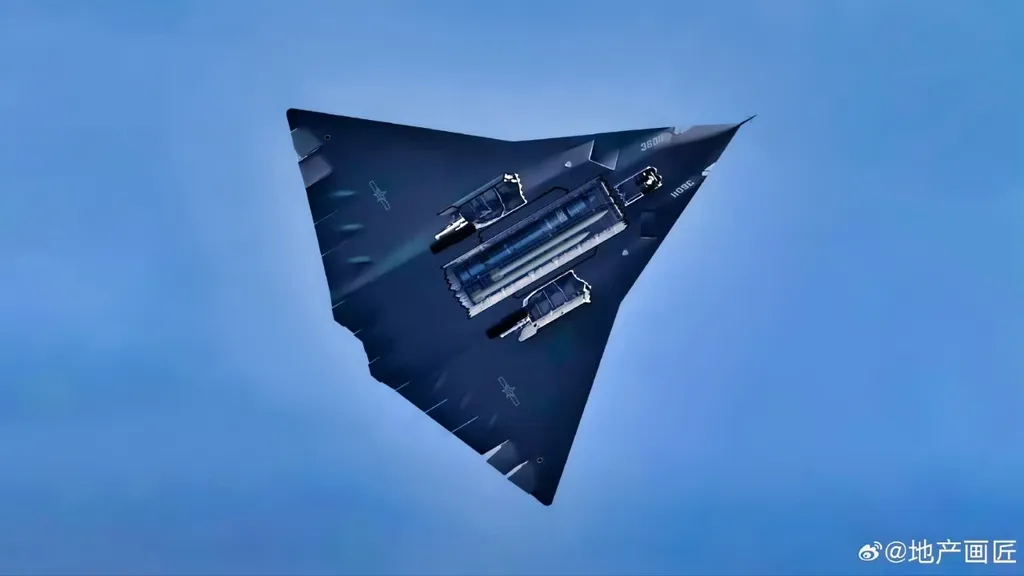Deep in the remote expanses of the Gobi Desert, the secretive Chinese military base at Lop Nur is buzzing with activity. Once the site of China’s first nuclear test in 1964, this sprawling facility in Xinjiang province has transformed into a hub for cutting-edge military technology, shrouded in secrecy. The base, often compared to the United States’ fabled Area 51, is a tightly controlled environment where the latest advancements in military technology are developed and tested away from prying eyes.
Recent satellite images from Planet Labs, shared exclusively with The Telegraph, reveal two new, tailless stealth fighter jets stationed at Lop Nur’s massive three-mile-long airstrip. The longer runway, believed to accommodate an experimental, reusable space plane, underscores China’s ambitious strides in aerospace technology. The main apron has been expanded, and several new hangars have been erected, indicating a significant scaling up of operations.
The larger of the two jets, designated the J-36, is a three-engine, two-seater fighter with a design optimized for stealth. According to Peter Layton, an aviation and defence expert at Griffith University in Australia, the absence of a tail helps scatter radar signals, making the aircraft harder to detect. The J-36’s substantial size, with a 65-foot wingspan and 62-foot length, suggests it is designed to carry a significant payload, potentially including air-to-ground weapons or long-range air-to-air missiles. Its third engine, a rare feature in military aircraft, indicates the capability for sustained supersonic cruising without relying on an afterburner.
The second stealth fighter, known as the J-XDS or J-50, is a smaller, single-seat aircraft with two engines. Like the J-36, it is designed for high-speed, high-altitude operations with low manoeuvrability, aimed at launching missiles before being detected. Experts suggest that these fighters could operate together as a strike package, capable of penetrating defended airspace at supersonic speeds. This capability could be strategically critical in scenarios such as a potential offensive against Taiwan, where rapid deployment could limit the time available for defence preparations.
The presence of these advanced aircraft at Lop Nur highlights the base’s role as a critical site for China’s military advancements. Ankit Panda of the Carnegie Endowment for International Peace and Douglas Barrie of the International Institute for Strategic Studies have drawn parallels between Lop Nur and Area 51, emphasizing its importance in China’s defence strategy.
Beyond the development of stealth fighters, Lop Nur has also seen the establishment of a new nuclear testing site. Renny Babiarz, a former analyst at the National Geospatial-Intelligence Agency, discovered that between 2020 and 2024, China developed a new test area east of the original site. Satellite images reveal new boreholes, horizontal tunnels, access roads, support buildings, and storage facilities for explosive materials. Babiarz suggests that these developments indicate China’s preparation for nuclear testing, potentially including low-yield tests in horizontal tunnels.
Over the same period, China has expanded its missile silo fields, including the Hami field near Lop Nur. According to a report by the Bulletin of the Atomic Scientists, China has been rapidly increasing its nuclear stockpile, now estimated at approximately 600 warheads. This expansion is part of a broader strategy to deter potential US intervention in regional conflicts, such as a hypothetical invasion of Taiwan.
As China continues to invest heavily in its military capabilities, the activities at Lop Nur serve as a stark reminder of the country’s growing influence and technological prowess. The base’s secretive nature and the advanced technologies being developed there underscore the urgent need for the West to monitor and understand the rapid advancements in China’s military arsenal. The strategic implications of these developments are profound, shaping the future of global security and defence dynamics.

